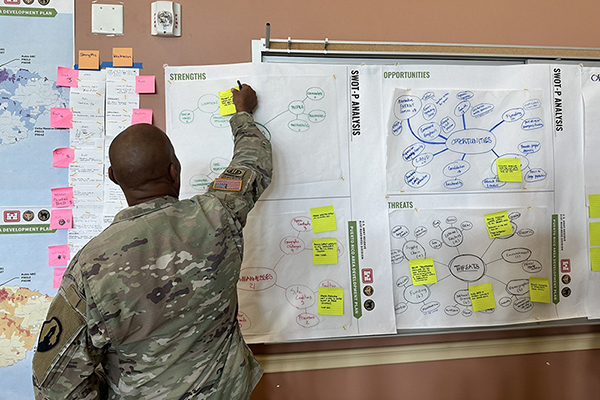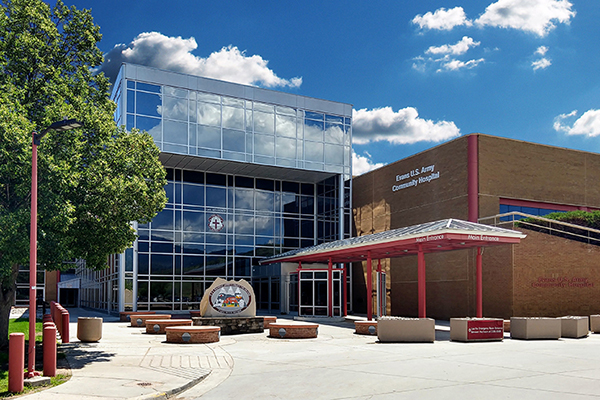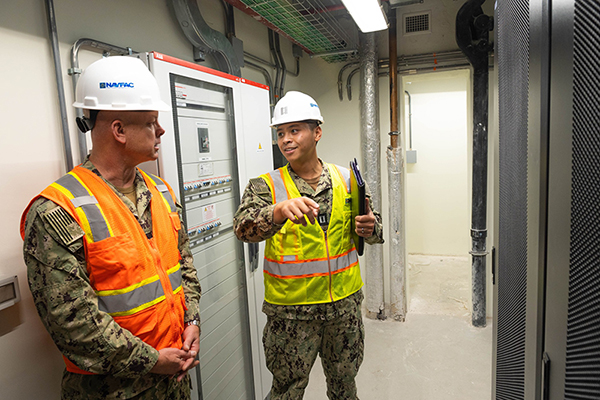By Joseph Manzella, P.E., LEED AP, and Robert Ikes III, RA, LEED AP, NYSCEO, NCIDQ
As military installations across the nation face increasing flooding risks driven by climate change, understanding the types of floods, their causes, and available measures to mitigate risk can support better resiliency upgrade projects.
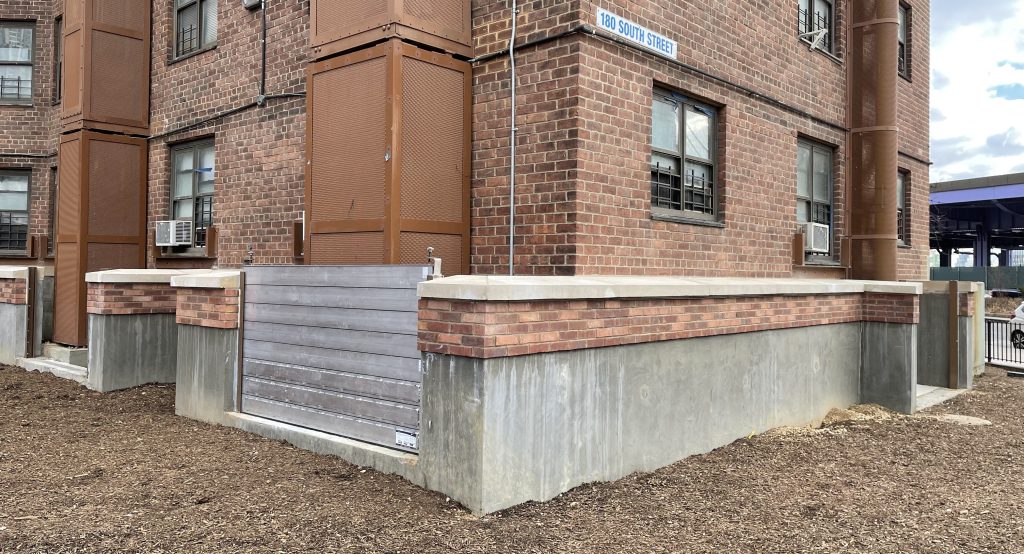
The U.S. Armed Forces operate at least 800 installations worldwide, which includes more than 450 locations across the United States. With close to $1 trillion in total expenditures annually, the military maintains a significant asset base as part of that budget. Additionally, that critical infrastructure is at significant risk of having operations disrupted by large storm events such as hurricanes, blizzards, floods, wildfires, and earthquakes.
Military real estate is expected to incur over $387 billion in damages during the next few decades resulting from rising tides and storms of increasing power. Certain sites, such as Naval Station Norfolk, Va., and Kennedy Space Center, Fla., are projected to face major floods at least once annually and minor floods on a weekly basis. Other locations are already mired in regular storm events. The U.S. Naval Academy on the Chesapeake Bay in Maryland has experienced over 20 flooding events per year since 2016.
The Department of Defense must invest resources in robust and innovative storm resiliency projects. But what is crucial to recognize is that simple, effective engineering can allow facilities to continue to operate in the face of even the most catastrophic weather events.
Differing Risks
Not all flooding events are identical, and, accordingly, not all flood resiliency measures will be the same. Understanding which facilities are facing which types of flood risks is vital when crafting solutions, as there is a wide array of factors that can affect how flooding manifests.
Broadly speaking, there are three major types of flooding: coastal, riverine, and shallow. Each impacts bases differently.
Coastal Flooding. Typically occurring within a short distance of water bodies, coastal flooding often is caused by hurricanes and other severe storms. Strong winds and dramatic changes in air pressure can cause a storm surge, where the water level of a large body of water quickly increases by several feet. These flows create massive waves that move inland.
Coastal flooding contributes to coastal erosion. Particles of rock, sand, and soil are carried away by rising water levels, powerful waves, and repeated flooding. This process can destroy local infrastructure and undermine structural foundations, causing increased instability with every storm.
Riverine Flooding. When a water channel overflows onto the floodplain, riverine flooding occurs. This can be caused by a watershed draining too much water into the channel or a downstream blockage that backs up water over the channel’s banks. The severity of the flood is usually affected by the velocity of the channel’s moving water and the nearby terrain. Riverine flooding, like coastal flooding, can destabilize structures located in or near the floodplain by eroding the underlying soil.
Flash flooding is an acute subset of riverine flooding, typically caused when severe rainstorms deposit massive quantities of water on hills and mountains, which then rapidly flows downward. These floods are especially dangerous because they occur with little to no warning and are often accompanied by debris.
Shallow Flooding. Following sustained rainfall in flat areas without proper avenues for drainage, shallow flooding spreads out over a wide area of uniform depth (sheet flow) or collects in smaller depressions in the ground (ponding). Shallow flooding tends to be the least dangerous form of flooding, but still has the potential to damage property and infrastructure through water infiltration of vulnerable points in building envelopes.
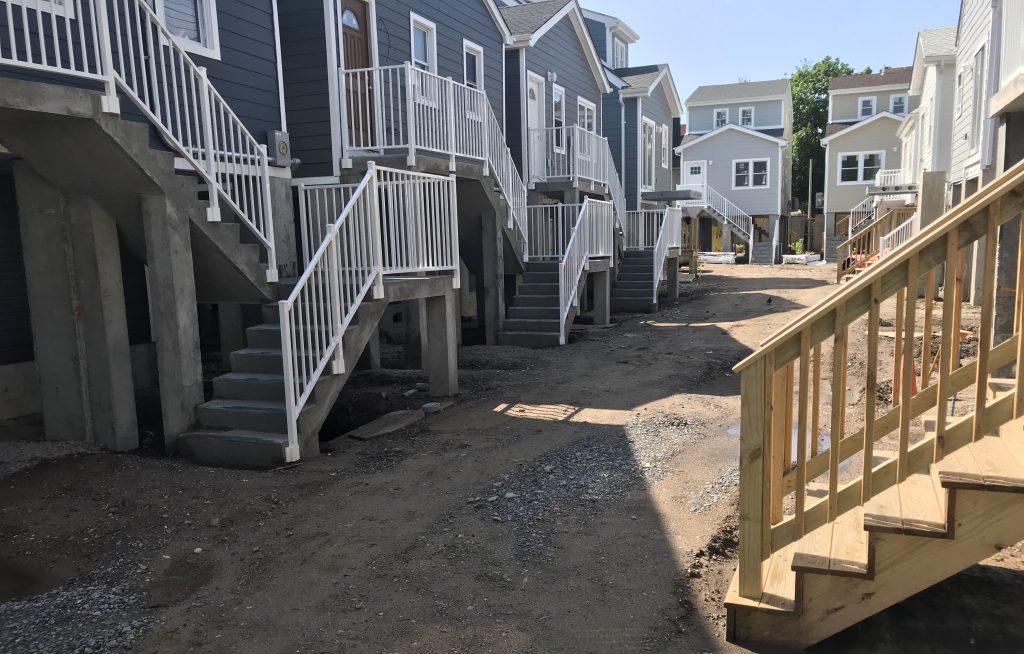
Taking Precautions
Universally, an effective precaution to minimize flooding is relocating primary functional spaces and important equipment above the design flood elevation (DFE). The DFE accounts for future rising sea levels and storms of increasing severity, representing the anticipated elevation a decade into the future. For areas susceptible to coastal flooding, any item that sits below the DFE should be secured. Structure foundations should be reinforced to resist at least 1,000-lb of impact.
Flood Protection Systems. Even with primary function spaces safely above the DFE, floodwaters can still wreak havoc. Flood protection systems can defend against flooding by either acting as a buffer or redirecting floodwaters. While certain components of a flood protection system may require implementation or activation by trained maintenance personnel, recommended flood protection systems are capable of self-activation.
- Dry flood-proofing involves sealing the structure so it is substantially impermeable, allowing in no more than 4-in of water over a 24-hour period. A flood-proof door, for example, will compress against the frame as floodwaters apply pressure, creating a watertight seal. Likewise, a tilt-up passive flood barrier will activate as water levels rise and hydrostatic pressure increases. Neither system requires human activation or electricity. This provides robust protection even when unoccupied or without power.
- Wet flood-proofing allows water to infiltrate the structure through vents and breakaway wall systems and move through areas that are resilient to water damage. These spaces may be constructed out of concrete, masonry, or porcelain. Allowing a certain amount of water into the structure helps equalize the pressure on both sides of the envelope, preventing catastrophic structural failure. Wet flood-proofing is not always feasible when certain spaces or areas cannot be elevated.
Reinforced Floors. Even when water is successfully kept out, it can still find its way beneath. A structural slab tied to perimeter foundation walls will resist upward buoyancy pressure as water builds up beneath the structure. Concrete, when coupled with steel, performs exceptionally well under compression and tension and can be sized to fit within the existing building envelope.
Retrofitting a structure to address flood risks can be arduous. Structural slabs should be considered at the outset of new construction in flood zones. In existing facilities, replacing floating slabs with structural slabs can be especially challenging. Work may be impacted by space or access constraints, the potentially limited capacity of existing structural components, and the routing of preexisting building utilities.
Mitigating Risks
The specifics of any single flood mitigation plan depends on a variety of factors, further complicated by the complexity of military structures in particular. The best way to determine which approach to flood mitigation to take is to consult with experienced architects and engineers who specialize in designing for storm resiliency.
Insulating the nation’s military facilities from rising sea levels and violent storms will require a significant investment on the part of government, but the alternative is far more costly.
Joseph Manzella, P.E., LEED AP, is Senior Vice President and Director of the Public Agency Market, and Robert Ikes III, RA, LEED AP, NYSCEO, NCIDQ, is Vice President and Deputy Director of the Private Sector Architecture Discipline, H2M architects + engineers. They can be reached at jmanzella@h2m.com; and rikes@h2m.com.
Article published in The Military Engineer, July-August 2024
More News from TME
-

Implementing Statewide Master Planning for Army Reserve Readiness
A statewide master planning initiative driven by the U.S. Army Reserve integrates advanced data analysis, GIS technology, and collaborative workshops to optimize every site for readiness, efficiency, and long-term sustainability. -

Seamless Synchronization and Strategic Planning: Aligning Data for Portfolio Management Success
A large-scale effort to realign data across 32.2-million-ft2 of Defense Health Agency medical centers is setting facility managers and owners up for success with more streamlined facility condition assessments and informed strategies. -

The Importance of a Commitment to Partnership
Overcoming the unexpected challenges that arose during a rehabilitation and modernization project at Naval Support Activity Naples demonstrates how an effective partnering program can transform potential obstacles into opportunities for innovation and success.
